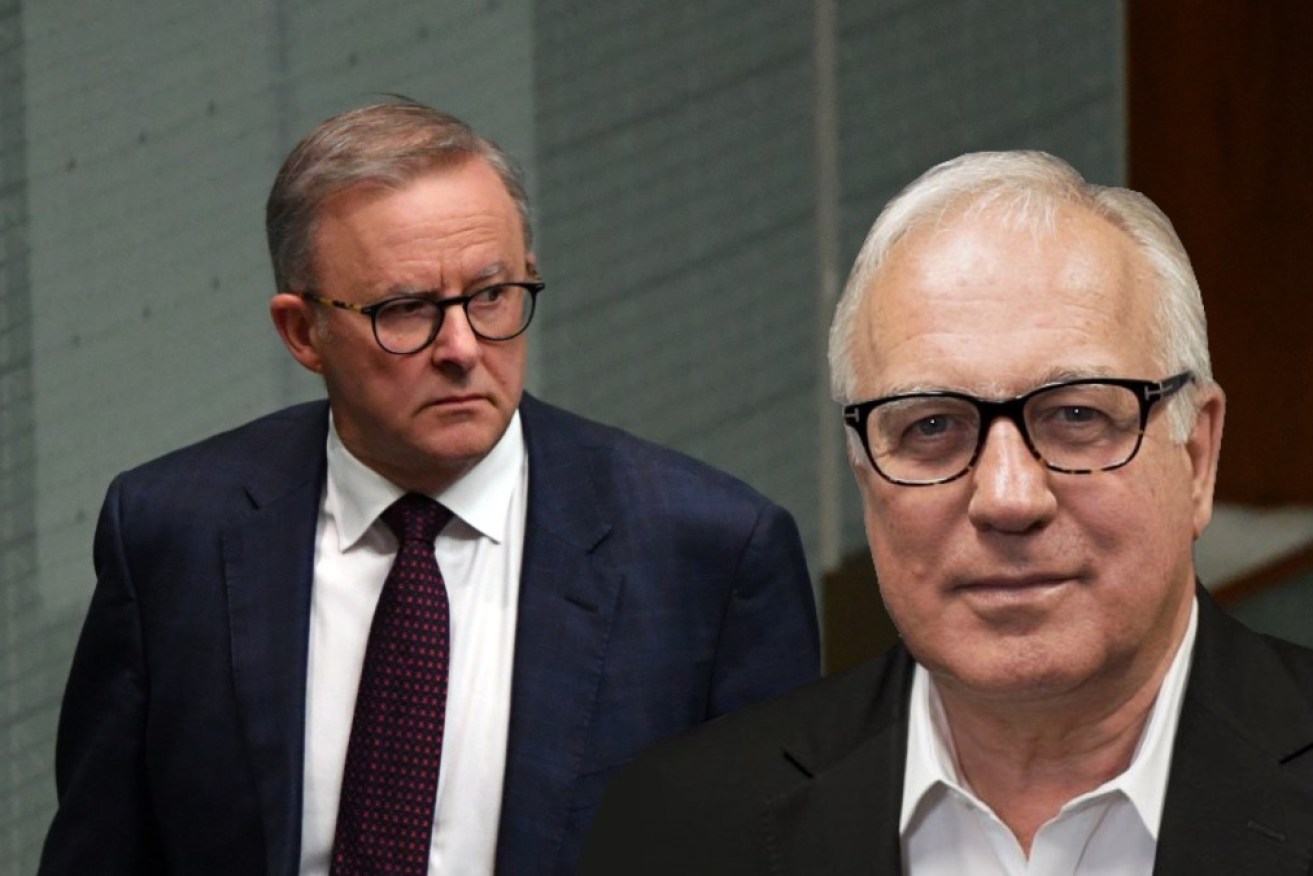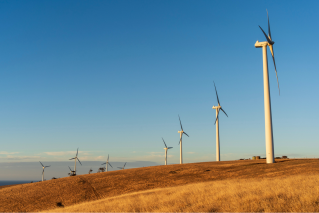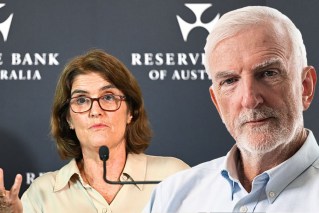Alan Kohler: Labor’s depressing job creation and power price cut election policy


Labor's policy shows yet again that Australia is far behind the rest of the world, writes Alan Kohler. Photo: TND/AAP
In another dismal display of the inability of Australian politics to deal with climate change, the Labor Party felt obliged to lower its target to win the election.
In reality, what Labor leader Anthony Albanese released on Friday is a job creation and power price reduction scheme – 604,000 jobs and $275 off your power bill – with global warming as a side benefit.
The new target of 43 per cent emissions reduction by 2030 is only slightly less than the 45 per cent they came up with six years ago and took to the 2019 election, but with long-term prediction models like this, 2 per cent is a statistical error.
They might just as easily have come up with an increase of 2 per cent with a slight tweaking of the assumptions, but must have decided a slight reduction would look better.
It’s a depressing reflection on what Australia’s politicians think the Australian public is up for with climate change.
Even more depressing: Maybe they’re right.
Maybe a serious emissions reduction plan would leave Labor languishing in Opposition, so best to keep it squishy for now and then firm it up in government, like John Howard did with the GST between 1996 and 1998.
If they’re wrong, and Australians would actually embrace tough action on climate change – which is ardently to be hoped – independents will hold the balance of power and all bets will be off.
Labor’s two pillars
There are two pillars to the Labor plan: A gradual reduction in the “emissions baselines” for facilities that release more than 100,000 tonnes of greenhouse gases per year, and a set of good proposals to encourage renewable energy and electric vehicles.
The baseline reductions make it a much better plan for net zero by 2050 than the Coalition’s, but that’s not saying much.
Mr Albanese and climate change spokesman Chris Bowen don’t discuss the exact amount of gradual reduction in baselines in their statements.
They simply matched the wording of the Business Council of Australia’s recommendation published in October, a month after this column suggested the same thing.
That wording is: “that emissions be reduced gradually and predictably over time, to support international competitiveness and economic growth – consistent with industry’s own commitment to net zero by 2050”.
On page 22 of the modelling of the Labor policies by RepuTex Energy, a number was put on it – 5 million tonnes per year, starting in 2023-24.

Australia was labelled a climate laggard at COP26 in Glasgow.
The ‘safeguard mechanism’
There are 512 heavy-emitting facilities listed on the “safeguard mechanism” section of the Clean Energy Regulator’s website, and their baselines add up to 485.7 million tonnes.
Each baseline theoretically means that if the plant goes above that level, the owner has to buy Australian Carbon Credit Units generated as a result of emission reduction.
But because the Coalition is keen to ensure Australia has nothing remotely resembling a carbon tax, the baselines are kept at what these firms actually emit, so they don’t have to do anything different and have actually been allowed to go up, not down.
The government could have included a gradual reduction in baselines as part of its plan, in line with the BCA’s recommendation, but went for “technology, not taxes”, aka “a wing and a prayer”.
All proposed reductions in emissions – by 2030 and 2050 – are from the level of 2005, which the National Greenhouse Gas Inventory put at 623 million tonnes.
Emissions fell to 494 million tonnes in the year to March 2021, or 20 per cent below the 2005 level, and government forecasts have them falling by 35 per cent by 2030, down to 388 million tonnes.
But RepuTex says that forecast involves “high technology sensitivity” and has “little detail” against it, so Labor is using 439 million tonnes, or 30 per cent below 2005 as the “reference case”, or baseline for its policies.
That is, Labor is assuming the 30 per cent will happen, and is simply adding 13 per cent of abatement with its policies.
But part of the recent decline was due to the pandemic recession, so emissions could rise next year as the economy recovers and there’s more driving and flying.
How Labor’s numbers stack up
A cut of 43 per cent by 2030 requires 268 million tonnes to come out from the 2005 level, or 139 million from the 2021 level – assuming there is no increase next year.
If emissions rise back to, say, 550 million tonnes in 2022, the reduction required by 2030 is 195 million tonnes.
Labor’s baseline cuts produce 30 million of that (six years times 5 million tonnes), but the RepuTex modelling assumes it gets to 48 million tonnes with money from the National Reconstruction Fund.
Taking that assumption as valid, that leaves 95 million tonnes for renewables and offsets if there is no increase in emissions next year from the economic recovery, or 152 million tonnes if emissions do rise back to 550 million tonnes.
There are four elements to Labor’s renewable energy policy: $20 billion to rewire the grid, $200 million for the installation of 400 community batteries, $100 million for shared “solar banks” for apartment buildings and a commitment that the government itself will be net zero by 2030.
The rewiring has to be done anyway, by whoever is in government, because the grid isn’t built for renewables.
Nevertheless RepuTex puts the emissions reduction in 2030 from rewiring at 37 million tonnes.
Community batteries will reduce emissions by 86,000 tonnes by 2030 and 1.1 million tonnes by 2050; and the reduction from shared solar banks will be 448,000 tonnes by 2030 and 810,000 tonnes by 2050.
The plan to subsidise electric vehicles produces 4 million tonnes of abatement by 2030, according to the modelling, and 68 million by 2050.
And finally, the Australian Public Service going net zero by 2030 abates 430,000 tonnes by 2030 and 6.4 million tonnes by 2050.
So, the total from Labor policies by 2030 is roughly 91 million tonnes.
But the required abatement for a 43 per cent reduction versus 2005 is 268 million tonnes, of which Labor is assuming 177 million tonnes is already locked in.
If they’re right, and a 30 per cent reduction in emissions by 2030 really is locked in, they’re near enough – 43 per cent it is, more or less, give or take 2 per cent.
If not, and emissions rise with the economic recovery, the difference will have to be made up in other ways, presumably tighter baseline cuts or offsets, or both.
In any case, 43 per cent – an extra 13 per cent on top of the government’s projections – is hardly challenging.
It is the second softest 2030 target in the country, softer than all business groups and Liberal state governments.
But it’s a job creation and power price cut election policy, not a climate change policy.
Alan Kohler writes twice a week for The New Daily. He is also editor in chief of Eureka Report and finance presenter on ABC news








